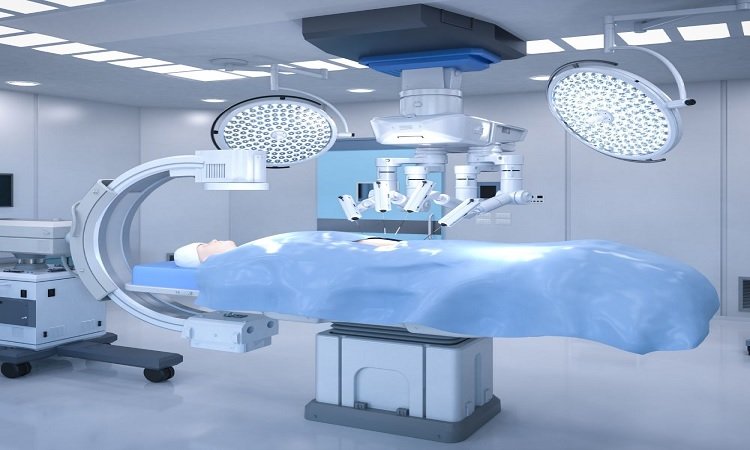Surgical Navigation Systems Market Trends 2025: Analysis & Forecasts
Explore in-depth analysis and future forecasts for the surgical navigation systems market. Discover trends, growth drivers, challenges, and opportunities driving innovation in healthcare.

Surgical Navigation Systems Market Trends 2025-2035: In-Depth Analysis & Future Forecasts
Global surgical navigation systems market experiences ongoing transformation because healthcare demands and advanced technology continue to push forward surgical innovation. The market will experience accelerated growth in 2025 because of leading technical innovations together with patient surgery requirements increasing and digital healthcare becoming part of routine procedures.
Introduction
The operating room now depends heavily on surgical navigation systems that function as fundamental equipment. These systems merge sophisticated imaging technology with real-time data analytics and computer-based guidance to make minimally-invasive procedures more accurate for surgeons. Market analysts predict substantial growth for surgical navigation systems because of growing complex surgical procedures and escalating demands for precise medical treatments.
Our comprehensive Surgical Navigation Systems Industry report ready with the latest trends, growth opportunities, and strategic analysis- View Sample Report PDF
Understanding Surgical Navigation Systems
Surgical navigation systems are computer-assisted devices used during surgery to provide real-time visualization and guidance. Surgeons use these systems to precisely monitor surgical tools alongside anatomical structures which leads to risk reduction and enhanced patient results. These systems combine with imaging technologies such as CT, MRI and ultrasound to support surgical work in neurosurgery together with orthopedics and cardiovascular procedures.
The combination of advanced software and hardware enables surgical navigation systems to link diagnostic images with surgical procedures which positions them as fundamental medical technology of our current healthcare era.

Market Trends Shaping the Surgical Navigation Systems Market
Technological Advancements
One of the primary drivers of growth in the surgical navigation systems market is continuous technological innovation. Recent advancements include:
- Enhanced Imaging Integration: Modern systems now integrate high-resolution imaging modalities, providing surgeons with real-time 3D visualization of the operative field.
- Artificial Intelligence (AI) and Machine Learning: AI algorithms are being deployed to analyze imaging data, predict surgical outcomes, and provide decision support.
- Robotic Integration: The synergy between robotic surgery and navigation systems is increasing, leading to greater precision and reduced human error during procedures.
These advancements not only improve surgical outcomes but also streamline surgical workflows, which is fueling market expansion as healthcare providers adopt more sophisticated technologies.
Increasing Demand for Precision Surgery
The demand for precision surgery is on the rise due to the following factors:
- Minimally Invasive Procedures: There is a global shift towards minimally invasive surgeries that reduce patient recovery time and lower hospital costs. Surgical navigation systems play a pivotal role in facilitating these procedures.
- Improved Patient Outcomes: By providing real-time feedback and accurate localization, these systems enhance surgical precision, thereby reducing complications and improving recovery rates.
- Aging Population: An increase in age-related conditions, such as degenerative diseases and cancers, is driving the need for advanced surgical interventions where navigation systems are critical.
Digital Transformation and Integration of AI & Robotics
The digital transformation of healthcare is a significant market trend. The integration of digital health technologies with surgical navigation systems is revolutionizing the way surgeries are performed:
- Telemedicine and Remote Assistance: Surgeons can now consult in real-time with experts remotely, thanks to advanced connectivity and digital imaging solutions.
- Data-Driven Decisions: The accumulation of big data from surgeries enables the refinement of surgical techniques and the development of predictive models, further improving system performance.
- Personalized Surgical Planning: Customized treatment planning using patient-specific data is becoming standard practice, contributing to better clinical outcomes.
Take Action Now: Secure your Global Surgical Navigation Systems industry today – Purchase Now
Future Forecast and Market Growth Projections
According to industry reports, the surgical navigation systems market is expected to grow at a robust compound annual growth rate (CAGR) through 2025. Factors contributing to this optimistic forecast include:
- Increased Adoption: Hospitals and surgical centers worldwide are investing in advanced navigation systems to stay competitive and improve patient care.
- Regulatory Support: Streamlined approval processes and government incentives in several regions are fostering market growth by encouraging innovation and adoption.
- Expanding Applications: The versatility of navigation systems in various surgical disciplines ensures a broader market reach, driving future demand.
The market forecast for 2025 suggests that emerging economies in Asia-Pacific, Latin America, and the Middle East will contribute significantly to global growth due to expanding healthcare infrastructures and rising patient awareness.
Key Growth Drivers in the Surgical Navigation Systems Market
Several key factors are driving growth in this market:
- Rising Healthcare Expenditure: Increased investments in healthcare infrastructure and technology are boosting the demand for state-of-the-art surgical navigation systems.
- Technological Innovation: Ongoing R&D efforts are continuously improving system accuracy, user interface, and integration capabilities.
- Clinical Benefits: Enhanced surgical precision and reduced operative risks translate into better patient outcomes, further accelerating market adoption.
- Strategic Partnerships: Collaborations between technology providers, medical device manufacturers, and healthcare institutions are fostering innovation and market expansion.
Challenges Facing the Surgical Navigation Systems Market
While the outlook is positive, the market faces several challenges:
- High Cost of Implementation: Advanced surgical navigation systems come with significant capital investment and maintenance costs, which may limit adoption in cost-sensitive markets.
- Regulatory Barriers: Navigating complex regulatory environments across different regions can slow market penetration.
- Training and Adoption: The successful integration of these systems requires extensive training for surgical teams, which may be a barrier in some institutions.
- Data Security Concerns: As systems become more interconnected and data-driven, ensuring cybersecurity and patient privacy becomes increasingly critical.
Addressing these challenges through cost-effective solutions, regulatory harmonization, and enhanced training programs will be essential for sustained market growth.
Opportunities for Stakeholders
The future of the surgical navigation systems market offers several promising opportunities:
- Investment in R&D: Increased R&D funding will lead to the development of next-generation systems that are more efficient and user-friendly.
- Emerging Market Expansion: Entering emerging markets with tailored solutions can capture untapped growth opportunities.
- Collaborative Innovations: Strategic partnerships between tech firms, medical device companies, and healthcare providers can accelerate innovation and market adoption.
- Integration with Digital Health: Leveraging digital health tools, such as AI, machine learning, and telemedicine, can enhance the functionality of surgical navigation systems and drive further growth.
By capitalizing on these opportunities, companies can not only improve surgical outcomes but also achieve significant market expansion and increased revenue.
For more Report Details:- View Full Report Now!
Conclusion
The Surgical Navigation Systems market shows strong growth potential leading to 2025. This market moves forward because of three main trends including breakthrough technological advances coupled with rising need for precise surgeries and healthcare digital transformations. The global surgical practices see transformation thanks to advanced imaging and artificial intelligence alongside robotics and digital health approaches despite facing high implementation costs alongside regulatory hurdles.
Medical institutions can achieve better surgical results through patient outcomes and workflow efficiency by adopting innovative healthcare technologies. Investors alongside industry stakeholders find pleasure in the market's anticipated growth as well as the developing opportunities which provide sustained expansion possibilities.
For an in-depth analysis of market forecasts, key players, and regional trends, explore the detailed Surgical Navigation Systems market report by Vantage Market Research.


















